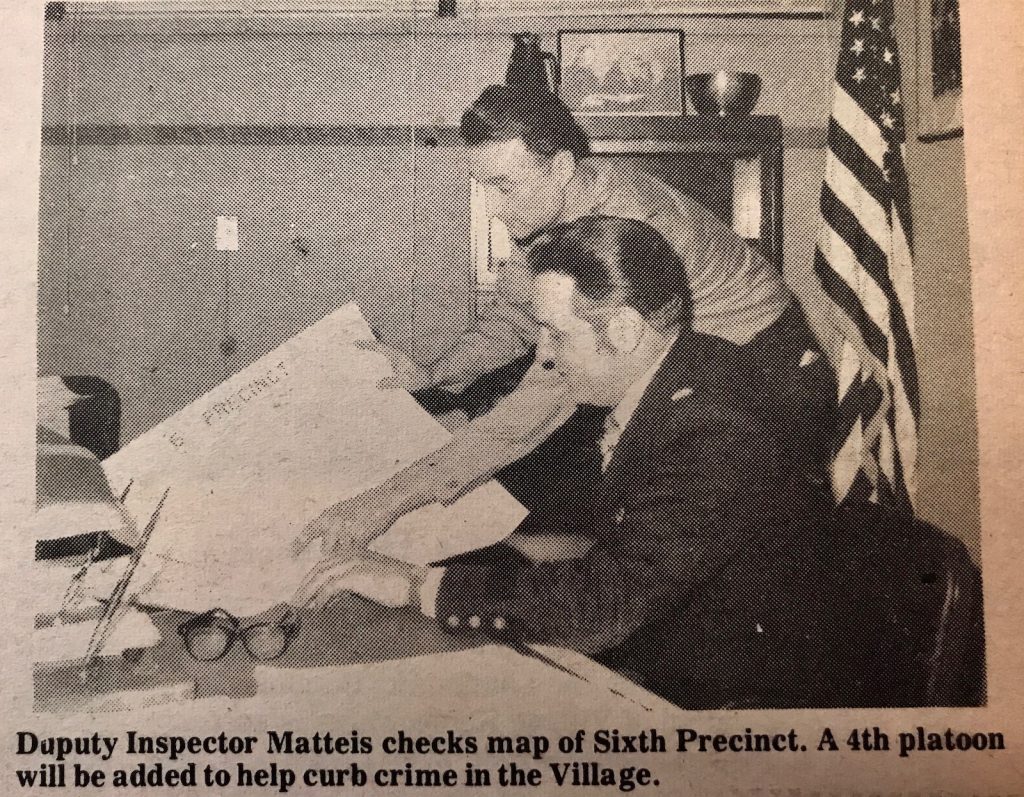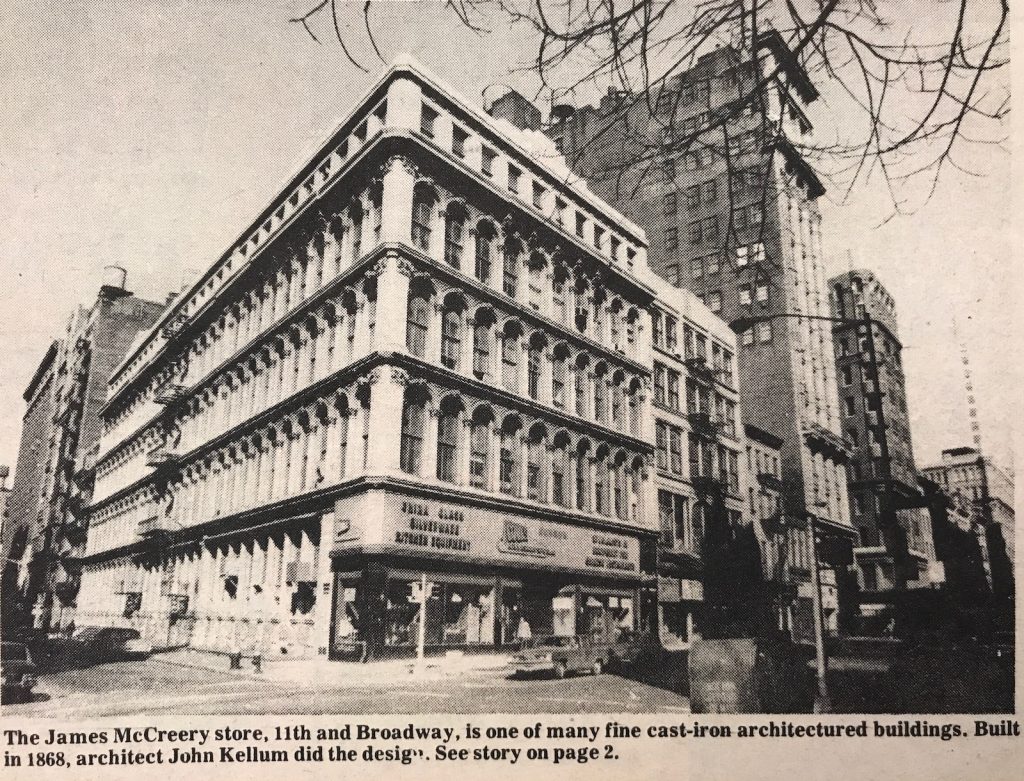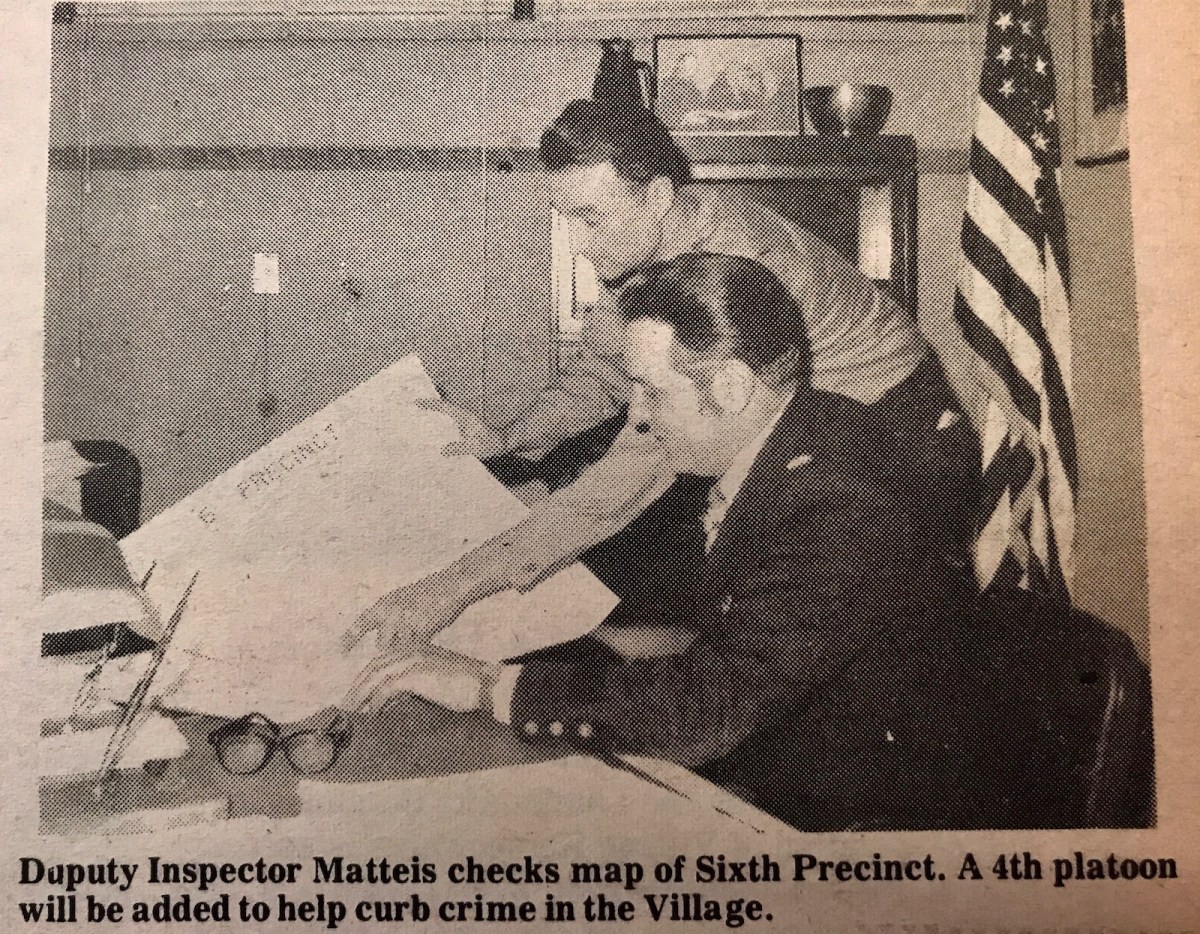BY GABE HERMAN | Page One of The Villager on April 29, 1971, featured an article on more police being added to Greenwich Village streets during high-crime hours.
Deputy Inspector Salvatore Matteis announced that an extra platoon would be added to the then-current police force for the area.
Police studies showed that the hours between 6 p.m. and 2 a.m. in the spring and summer were the periods of highest street crime in the neighborhood. Those were also the times when the Village saw the greatest number of visitors thronging the streets, the article said.
Local civic leaders and members of Community Planning Board 2 praised Matteis for swift action after his being appointed the Sixth Precinct’s commanding officer.

Matteis also announced there would be an open house for the community at the Sixth Precinct’s new stationhouse at 233 W. 10th St., where the precinct remains today.
The inspector said he was inviting all Villagers to the open house, which would include educational exhibits and a variety of police equipment on display.
“I want them to know that the Police Department is here to serve their best interests and I hope too that they will understand some of the problems that the policeman faces in enforcing the law,” he said.
Matteis added, “We need the public’s cooperation in order to do a good job for the public.”
Also on Page One, local residents told The Villager that, for the most part, they opposed an idea to give students the option of attending high school either during the day or at night.
The Evening-Option High School proposal by Schools Chancellor Harvey B. Scribner was advanced as a way to relieve overcrowded schools, and to help students who needed daytime hours to work or help with their families.

There were to be two complete and separate programs in each school building under the plan, including separate staffs and student bodies.
Joan Stoliar, who had a daughter in high school, objected because of the dangers of traveling at night and the inconvenience.
“If my child was offered the chance, I would scotch it at least during the younger years,” Stoliar said. “I would prefer her to come home and study and get a night’s rest.”
Also in the same issue of The Villager, the group Friends of Cast-Iron Architecture was planning to hold two upcoming walking tours in Lower Manhattan, “to stimulate appreciation and preservation of iron-front buildings,” The Villager reported.



































